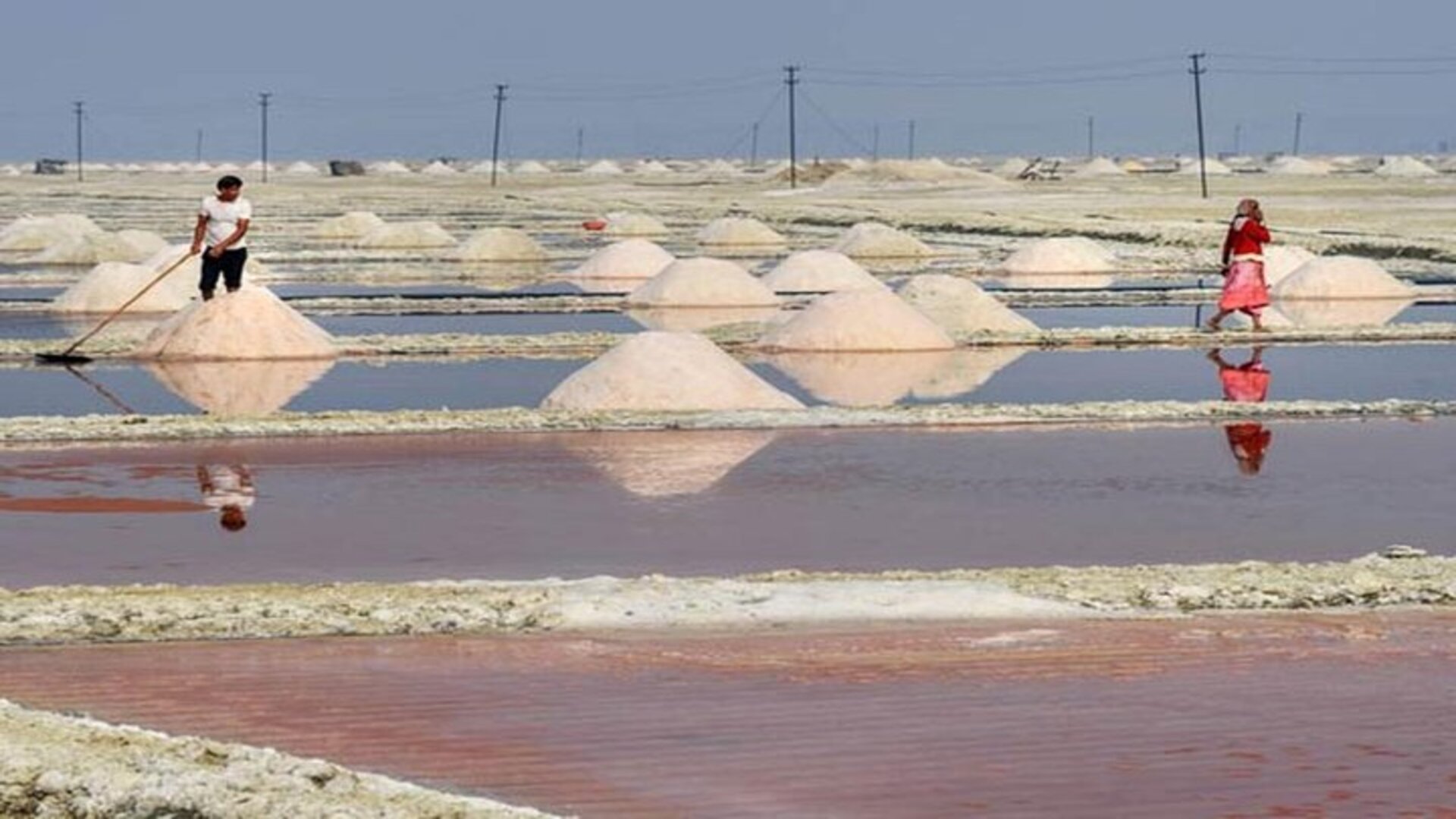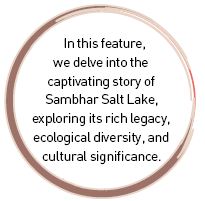


Nestled amidst the arid landscapes of Rajasthan, India, lies the sprawling expanse of Sambhar Salt Lake, a shimmering oasis of crystalline beauty and historical significance. Spanning across the districts of Jaipur and Nagaur, Sambhar Salt Lake stands as one of the largest inland saltwater lakes in India and a testament to the enduring relationship between humanity and nature. In this feature, we delve into the captivating story of Sambhar Salt Lake, exploring its rich legacy, ecological diversity, and cultural significance.
The history of Sambhar Salt Lake traces back to antiquity, with archaeological evidence suggesting that salt extraction has been practiced in the region for over 5,000 years. Ancient civilizations, including the Indus Valley civilization, are believed to have utilized the salt deposits of Sambhar for preserving food and seasoning, making it a vital commodity for trade and commerce.
Over the centuries, Sambhar Salt Lake emerged as a center of salt production and a crucial source of revenue for various dynasties and kingdoms that ruled the region. Historical records indicate that the lake was granted royal patronage by Rajput rulers, who recognized its strategic importance and economic value.
Despite its saline environment, Sambhar Salt Lake supports a remarkable array of flora and fauna that have adapted to its unique conditions. The lake’s brackish waters and marshy wetlands provide a sanctuary for migratory birds, including flamingos, pelicans, and storks, which flock to its shores during the winter months, transforming the landscape into a vibrant avian paradise.
The surrounding salt flats and mudflats are home to a diverse range of halophytic plants, specially adapted to thrive in high salinity environments. These resilient plant species play a crucial role in stabilizing the lake’s ecosystem and preventing soil erosion, thereby contributing to the overall ecological balance of the region.

Beyond its ecological significance, Sambhar Salt Lake holds immense cultural and spiritual significance for the people of Rajasthan. The lake is revered as a sacred site, with numerous temples and shrines dedicated to Hindu deities dotting its shoreline. Devotees from far and wide visit these holy sites to offer prayers and seek blessings, particularly during auspicious occasions and festivals.
The annual Kartik Purnima festival, celebrated with great fervor and devotion, sees thousands of pilgrims taking a holy dip in the waters of Sambhar Salt Lake, believing it to cleanse their sins and bestow divine blessings. The festival is marked by colorful processions, religious rituals, and cultural performances, showcasing the rich heritage and traditions of Rajasthan.
Despite its historical and cultural significance, Sambhar Salt Lake faces numerous challenges, including environmental degradation, pollution, and unsustainable salt mining practices. The rapid expansion of industrial activities and urbanization in the surrounding areas has exerted pressure on the lake’s fragile ecosystem, threatening its biodiversity and long-term sustainability.
In response to these challenges, various conservation organizations, government agencies, and local communities have launched initiatives to protect and preserve Sambhar Salt Lake and its surrounding wetlands. Efforts are underway to promote sustainable salt harvesting practices, mitigate pollution, and restore degraded habitats, ensuring the continued viability of this precious natural resource.
Sambhar Salt Lake stands as a timeless testament to the intricate interplay between human civilization and the natural world.
Its historical legacy, ecological diversity, and cultural significance underscore its importance as a symbol of resilience and harmony amidst the harsh desert landscapes of Rajasthan. As we strive to safeguard the legacy of Sambhar Salt Lake for future generations, let us cherish and celebrate its enduring beauty and significance as a sacred cradle of salinity and serenity.